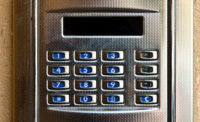How Situational Awareness and Location Systems Ensure Safety on America’s College Campuses

Today, security is of utmost importance at the nation’s colleges and universities. Events such as the Virginia Tech shooting in 2007 remind administrators, parents and students of the stark reality that considering the safety of all individuals who visit, work or attend classes at college campuses is essential. The need to implement a comprehensive mobile duress, situational awareness, location and mass notification system is now a mission critical requirement in order to achieve a level of security that will ensure the safety and protection of those on campus. Now, there are wireless sensor networks that can offer an integrated location and situational awareness solution. These new systems combine mass notification capabilities with the most advanced positioning technology to pinpoint mobile duress alarm devices. They also can monitor any security and sensor devices and interface to fire, access control and environmental systems, and provide instant notification to mass communication alert devices.
Situational Awareness & Location Systems in Education
It is estimated that nearly two million people are victims of workplace violence in the U.S. each year. Today, staff at schools and universities are at even greater risk. For example, in 2007, more than 100 students were expelled from the Baltimore school system for assaulting staff. The high-profile school shootings of the last two decades exposed the weaknesses of security on education campuses. Most modern education campuses are large and have a limited number of security personnel on-site. Help from local law enforcement is usually unavailable or of limited use during times of immediate response and crisis. According to a report by the U.S. Secret Service, most school shootings are resolved by staff or students, not law enforcement.
While completely removing the threat of violence in schools and universities is impossible, there are solutions that can significantly reduce the danger. Wireless sensor networks can notify those in harm’s way and alert authorities when and where help is needed in an emergency situation. New wireless systems not only determine the location of a developing emergency and can alert security personnel, but they also immediately notify students and staff across an entire campus so they can protect them by immediately implementing safety measures. Within the higher education market, there are several applications for situational awareness and location systems, which include:
|
• Staff mobile duress
• Parking garage safety
• Restroom safety
• Fire safety
• HVAC system monitoring
• Flood damage protection
• School closure notifications
• Maintenance reminders
|
The Advantages of a Wireless System
If a life-threatening event occurs on a campus, an alert is transmitted to a location/situational awareness system through the use of wireless technologies. The system can process and locate the position of the event and alert authorities immediately. Unlike traditional hard-wired control panel systems that have been used to detect safety issues and report alarms, a wireless system can provide a complete end-to-end, IP-enabled wireless solution. In addition, wireless does not require the placement of conduit which dramatically decreases installation time. In a hard-wired installation, the cost of cable/wire can add up. In contrast, a wireless solution is generally less expensive, more flexible and easy-to-use when compared to wired alternatives. Wireless systems also can work alone or be integrated with other safety and security systems.
This type of solution ensures that campuses and schools are alerted in the most efficient way possible, in the event of a threat. Some of the key benefits that wireless sensor networks can offer include:
Location: Wireless solutions can enable mobile duress applications by determining the area where an alarm is coming from within a building or campus setting. This allows faculty and students to signal for help and be located immediately.
Monitoring: Many of these wireless location/situational awareness solutions can work with end devices, such as pendant transmitters, universal transmitters and motion detectors. These systems also can integrate with other devices to conduct fire extinguisher monitoring, wireless perimeter beams, fence tilt sensors, man hole cover monitoring, water sensors and many other security solutions. This technology also offers the ability to alert users after-hours or when campuses and buildings are typically empty. The faster users are notified of an issue, the more rapidly they can take action. Real-time wireless sensor networks will allow continuous monitoring to ensure security issues are identified right away.
Notification: Wireless solutions also can coordinate event monitoring and mass notification. They can communicate information from in-building systems and route them to alert devices. In addition, they have the ability to combine multiple in-building systems into a single notification solution allowing for more efficient responses. Another unique quality of wireless sensor networks is that they can provide alerts to individuals or to entire groups. As events escalate, the recipient list can increase. This ensures that the appropriate people are notified and moved out of harms way, depending on the seriousness of the security alert.
Selecting a Wireless Location and Situational Awareness Solution
Each location, situational awareness and emergency mass notification system offers different options and capabilities. When a decision maker in an educational setting needs to determine what type of system will work for their campus, it is essential they do their research. By fully evaluating all of their options, they will be secure in their decision and achieve the results they need to protect their most important assets, human lives.
Before purchasing a system, users must understand the basics of their security set-up, including perimeter size, layout and who will interact with the system. Wireless systems offer much more flexibility and allow for easy re-location of sensors, repeaters and transmitters where needed. Installing a hard-wired system is intrusive and can cost more without offering any greater security or reliability. A robust wireless technology with a repeater network can overcome most obstructions and ensure full coverage of the site. In addition, simplicity is a very critical component in determining the best solution that fits the user’s needs.
Generally there are three rules for ensuring a simple solution. They are:
|
1) Is the system easy to install and deploy? 2) Is the system easily integrated with existing systems? 3) Is the system easy to maintain and modify as needs change? |
Importance of IP-Based Solutions
An emergency mass notification system must provide a variety of ways to immediately notify those who need to know about a security alert or alarm. IP-based wireless duress solutions use long-range wireless technology to both summon help and reliably pinpoint location, which greatly reduces a system’s overall cost and complexity. With the emergence of the Physical Security Information Management (PSIM) concept, IP-based solutions are becoming the next standard for all security devices and systems. An IP-based solution has numerous monitoring functions that additionally offer ways to gather information that can support business and efficiency goals on the campus.
Conclusion
New situational awareness systems are now are available through the installation of a wireless sensor network for security applications on education campuses. By choosing an IP-based solution, security functions are integrated into a single platform. Oftentimes this is the most efficient way to monitor location, situational awareness and implement mass notification. As security continues to be an increasingly important issue in education, faculty and students’ lives are at stake and the most advanced technologies will lead the race to protect one of society’s most vital institutions. With wireless sensor networks security directors at college campuses can rest assured they will have fast, reliable response in an emergency situation.
Looking for a reprint of this article?
From high-res PDFs to custom plaques, order your copy today!





